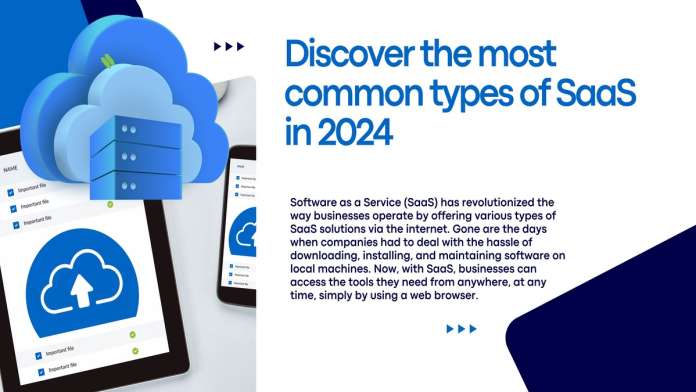Software as a Service (SaaS) has revolutionized the way businesses operate by offering various types of SaaS solutions via the internet. Gone are the days when companies had to deal with the hassle of downloading, installing, and maintaining software on local machines. Now, with SaaS, businesses can access the tools they need from anywhere, at any time, simply by using a web browser.
The Benefits of SaaS: Accessibility, Security, and Scalability:
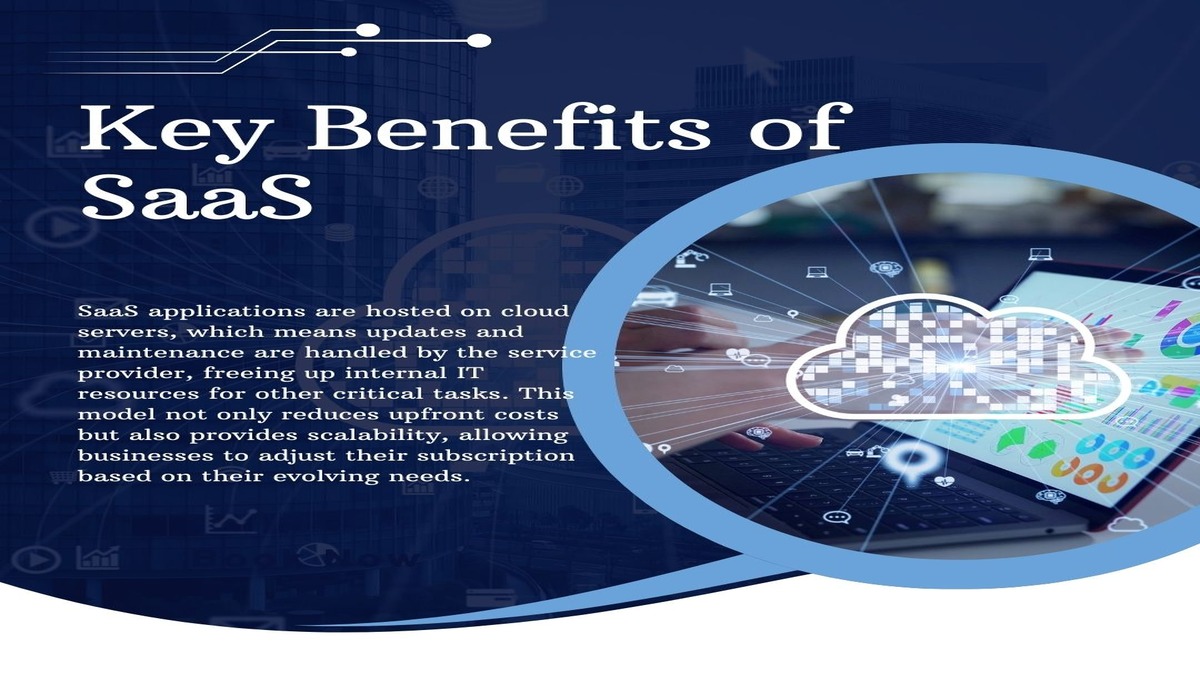
SaaS applications are hosted on cloud servers, which means updates and maintenance are handled by the service provider, freeing up internal IT resources for other critical tasks. This model not only reduces upfront costs but also provides scalability, allowing businesses to adjust their subscription based on their evolving needs.
- Accessibility: One of the biggest advantages of SaaS is its accessibility. Whether you’re at the office, on a plane, or working from home, all you need is an internet connection to stay productive. This flexibility is particularly beneficial in today’s remote work environment.
- Security: Security is another strong suit of SaaS offerings. Reputable providers offer robust security measures, including data encryption, redundancy, and regular backups to ensure data integrity and compliance with industry standards.
- Cost-Effective Subscription Model of SaaS: Moreover, the subscription-based pricing model of SaaS can be financially attractive. It eliminates the need for large capital expenditures on software licenses and hardware, instead allowing businesses to pay a manageable monthly or annual fee.
In summary, SaaS has democratized access to powerful software solutions, making it easier for businesses of all sizes to leverage advanced technologies without the associated complexity and costs. As technology continues to evolve, the SaaS model is likely to become even more integral to modern business operations.
The Most Common Types of SaaS in 2024:
| SaaS Type | Overview | Key Features | Top Platforms |
|---|---|---|---|
| Customer Relationship Management (CRM) SaaS | Manages customer interactions, enhances efficiency, provides valuable insights for sales and customer satisfaction. | Contact management, lead tracking, sales forecasting, automated support ticketing, live chat, in-depth reporting, integration with email marketing, and social media. | Salesforce, HubSpot, Zoho CRM |
| Enterprise Resource Planning (ERP) SaaS | Centralizes core business processes like finance, supply chain, and HR, offering cost-effective, scalable solutions. | Real-time data visibility, inventory tracking, payroll management, production scheduling, automatic updates, and robust security measures. | Oracle NetSuite, SAP Business ByDesign, Microsoft Dynamics 365 |
| Human Resources (HR) Management SaaS | Streamlines HR tasks, from recruitment to performance tracking, enabling efficiency in HR management. | Employee data access, remote accessibility, automation, compliance support, robust analytics for workforce trends, employee engagement, and performance metrics. | Workday, BambooHR, ADP Workforce Now |
| Communication & Collaboration SaaS | Facilitates real-time communication and collaboration, centralizing communication channels for efficiency. | Instant messaging, video conferencing, file sharing, task assignments, shared calendars, project boards, user-friendly interface, robust security, and scalability. | Slack, Microsoft Teams, Zoom |
| Marketing Automation | Automates marketing tasks, enabling businesses to focus on strategy and creative aspects. | Email automation, A/B testing, audience segmentation, CRM integration, social media scheduling, analytics, SEO optimization, lead nurturing, and reporting. | Mailchimp, HubSpot, Hootsuite, Buffer, SEMrush, Moz, Marketo, Pardot |
Customer Relationship Management (CRM) SaaS
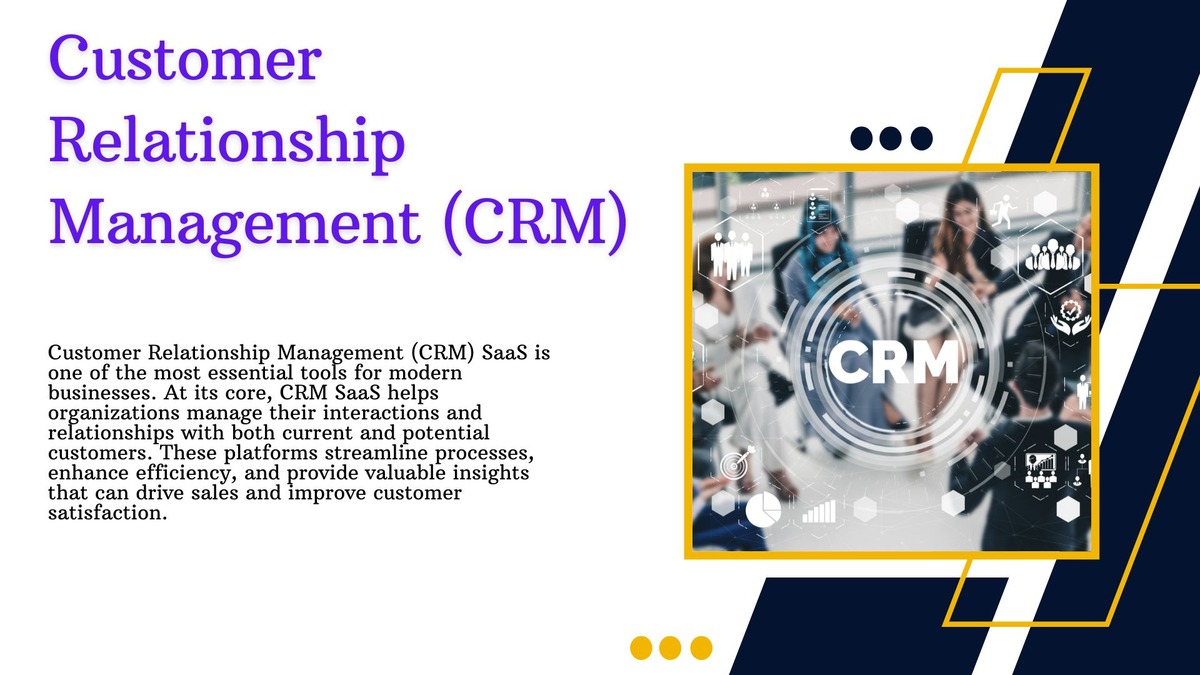
Customer Relationship Management (CRM) SaaS is one of the most essential tools for modern businesses. At its core, CRM SaaS helps organizations manage their interactions and relationships with both current and potential customers. These platforms streamline processes, enhance efficiency, and provide valuable insights that can drive sales and improve customer satisfaction.
- Accessibility and Scalability:
The beauty of CRM SaaS lies in its accessibility and scalability. Businesses of all sizes can leverage these solutions to store customer information, track sales activities, and analyze customer behavior—all from a central, cloud-based interface. This means teams can access real-time data from anywhere, providing the flexibility needed in today’s dynamic work environments.
- Top CRM SaaS Platforms for Businesses:
Some of the top CRM SaaS platforms that businesses often turn to include Salesforce, HubSpot, and Zoho CRM. These platforms offer a robust set of features such as contact management, lead tracking, and sales forecasting. More advanced solutions also integrate seamlessly with other tools and services, like email marketing platforms and social media channels, thereby providing a comprehensive view of customer interactions.
- Customer Service with CRM SaaS:
Beyond sales and marketing, CRM SaaS can significantly impact customer service. Features like automated support ticketing, live chat, and in-depth reporting equip customer service teams to resolve issues more efficiently, ensuring a better customer experience.
- Improving Customer Relationships with CRM SaaS: Ultimately, investing in a robust CRM SaaS solution can be a game-changer. It not only helps in managing customer relationships more effectively but also provides actionable insights that can drive long-term business growth. By choosing the right CRM SaaS, businesses can better understand their customers, meet their needs more precisely, and maintain a competitive advantage.
Enterprise Resource Planning (ERP) SaaS
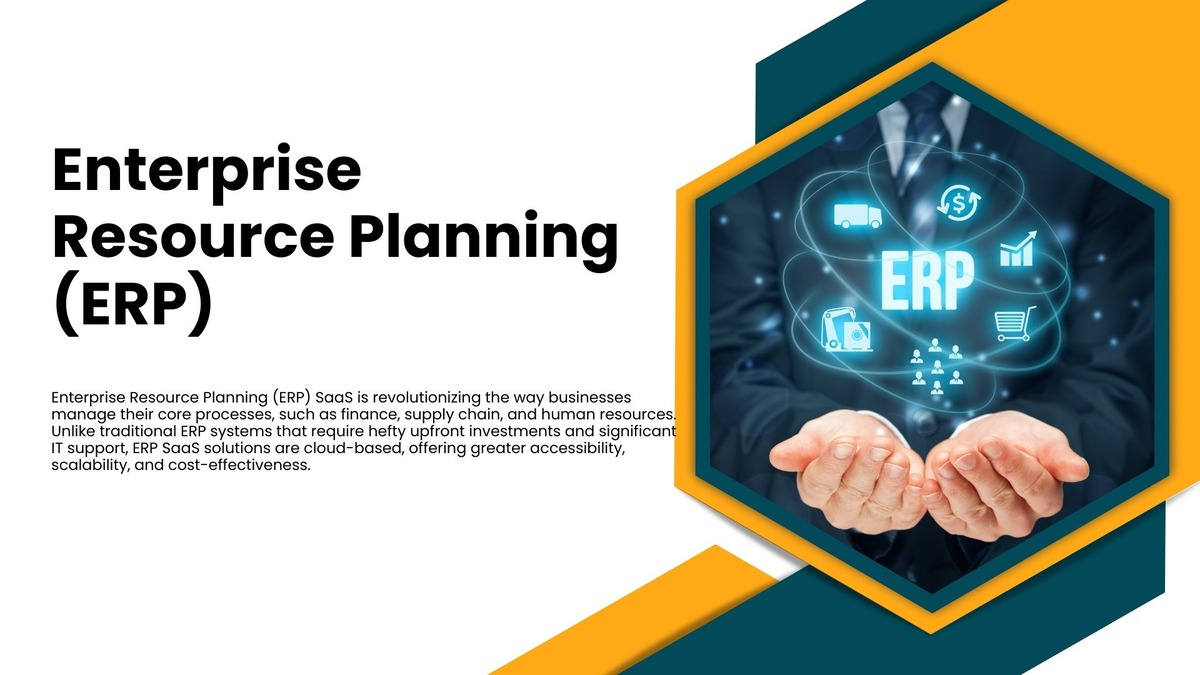
Enterprise Resource Planning (ERP) SaaS is revolutionizing the way businesses manage their core processes, such as finance, supply chain, and human resources. Unlike traditional ERP systems that require hefty upfront investments and significant IT support, ERP SaaS solutions are cloud-based, offering greater accessibility, scalability, and cost-effectiveness.
- Streamlining Operations: With ERP SaaS, businesses can streamline their operations by integrating various departmental functions into a single, cohesive system. This integration results in real-time data visibility, which is crucial for making informed decisions. Whether it’s tracking inventory levels, managing payroll, or overseeing production schedules, ERP SaaS platforms provide a unified view of business operations, reducing inefficiencies and errors.
- Flexibility: One of the most attractive aspects of ERP SaaS is its flexibility. As your business grows, you can easily scale the software to accommodate more users or additional functionalities. This adaptability makes it an excellent choice for small and medium-sized enterprises (SMEs) as well as large corporations. Plus, with automatic updates and regular maintenance provided by the service provider, companies can always access the latest features and enhancements without additional costs or downtime.
- Security: Security is another critical advantage. ERP SaaS providers invest heavily in security measures to protect sensitive data, offering robust encryption, regular security audits, and compliance with industry standards.
- ERP SaaS Solutions: Prominent ERP SaaS providers include Oracle NetSuite, SAP Business ByDesign, and Microsoft Dynamics 365, each offering tailored solutions to meet various industry needs. By opting for ERP SaaS, businesses not only improve operational efficiency but also gain a competitive edge in today’s fast-paced market.
Human Resources (HR) Management SaaS
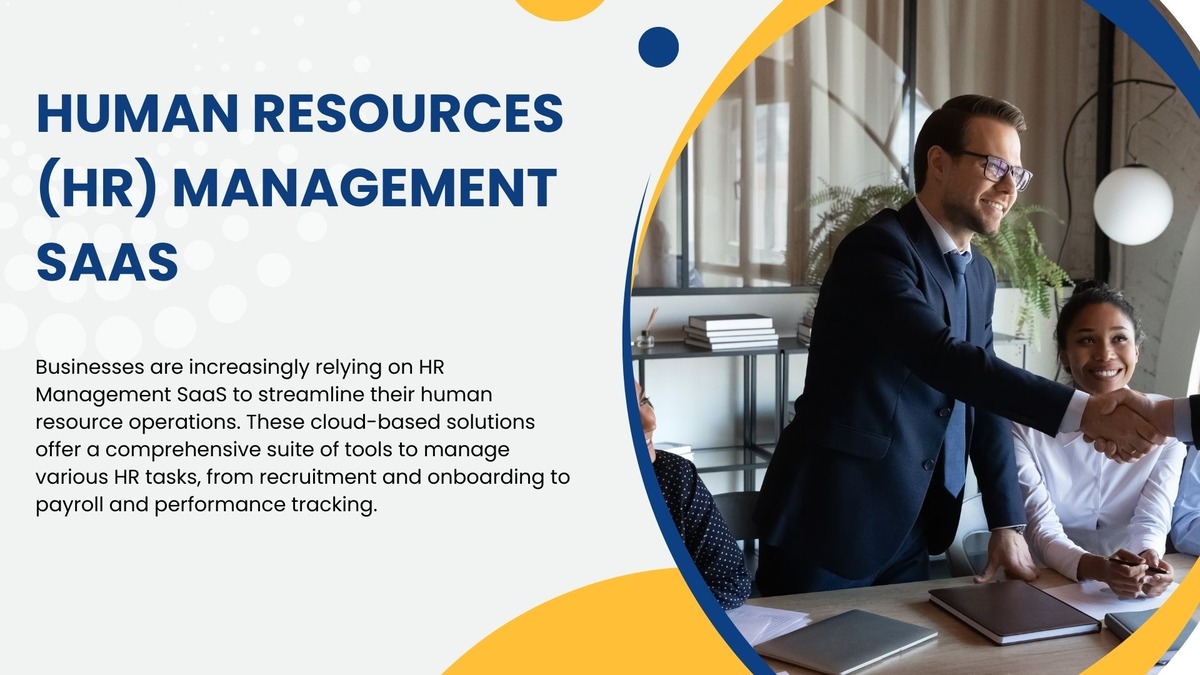
In today’s fast-paced digital world, businesses are increasingly relying on HR Management SaaS to streamline their human resource operations. These cloud-based solutions offer a comprehensive suite of tools to manage various HR tasks, from recruitment and onboarding to payroll and performance tracking.
- Enhancing HR Efficiency with SaaS: One major advantage of HR Management SaaS is its efficiency. Unlike traditional on-premise systems, these SaaS platforms allow HR teams to access critical data and perform tasks from anywhere, at any time. This is especially beneficial in the era of remote work, where flexibility and accessibility are key.
- Streamlining HR with Top SaaS Solutions: Popular HR Management SaaS solutions like Workday, BambooHR, and ADP Workforce Now offer user-friendly interfaces and powerful features. These platforms integrate seamlessly with other business systems, reducing the time and effort required for data entry and management. Automation capabilities in these platforms help in significantly reducing manual errors and ensuring compliance with various regulations.
- Leveraging Analytics for HR Insights: Moreover, HR SaaS solutions often come with robust analytics tools. These tools can provide insights into workforce trends, employee engagement, and performance metrics. By leveraging these insights, businesses can make data-driven decisions to enhance employee experience and improve overall productivity.
- Cost-Effectiveness of HR SaaS Solutions: Another significant benefit is cost-effectiveness. Traditional HR systems can be expensive to set up and maintain, but SaaS models typically operate on subscription-based pricing. This helps businesses manage their budgets more effectively and scale their operations as needed.
In summary, HR Management SaaS is revolutionizing how businesses manage their human resources. By offering a flexible, efficient, and cost-effective solution, these platforms are becoming indispensable in the modern business landscape.
Communication and Collaboration SaaS
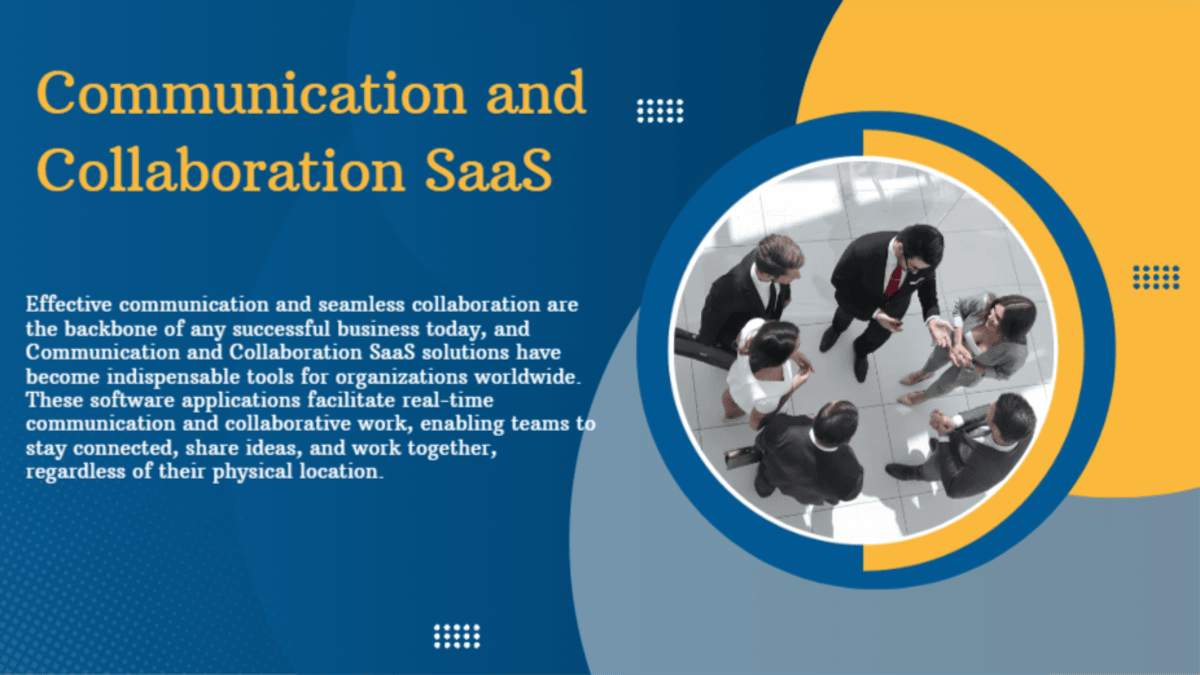
Effective communication and seamless collaboration are the backbone of any successful business today, and Communication and Collaboration SaaS solutions have become indispensable tools for organizations worldwide. These software applications facilitate real-time communication and collaborative work, enabling teams to stay connected, share ideas, and work together, regardless of their physical location.
-
Leading Communication & Collaboration Tools:
Top examples in this category include platforms like Slack, Microsoft Teams, and Zoom. These tools offer a range of features such as instant messaging, video conferencing, file sharing, and integration with other productivity apps. Such comprehensive utility ensures that businesses can maintain productivity and foster teamwork efficiently.
-
Centralize Communication Channels:
One of the key benefits of using Communication and Collaboration SaaS is its ability to centralize communication channels. Instead of sifting through endless email threads, team members can engage in direct conversations and group chats, vastly improving response times. Features like task assignments, shared calendars, and project boards further enhance collaborative efforts, ensuring everyone stays on the same page.
-
User Friednly Interface:
Moreover, these platforms are designed with user-friendly interfaces and robust security measures, making adoption seamless and safe. Scalability is another significant advantage. Whether you’re a startup or a large enterprise, these SaaS solutions can grow with your needs, offering flexible pricing models that accommodate different business sizes and requirements.
In an era where remote work has become the norm, investing in Communication and Collaboration SaaS is not just wise but essential. These tools ensure that your team can operate efficiently, regardless of geographical barriers, driving both productivity and innovation.
Marketing Automation SaaS: Elevate Your Campaigns
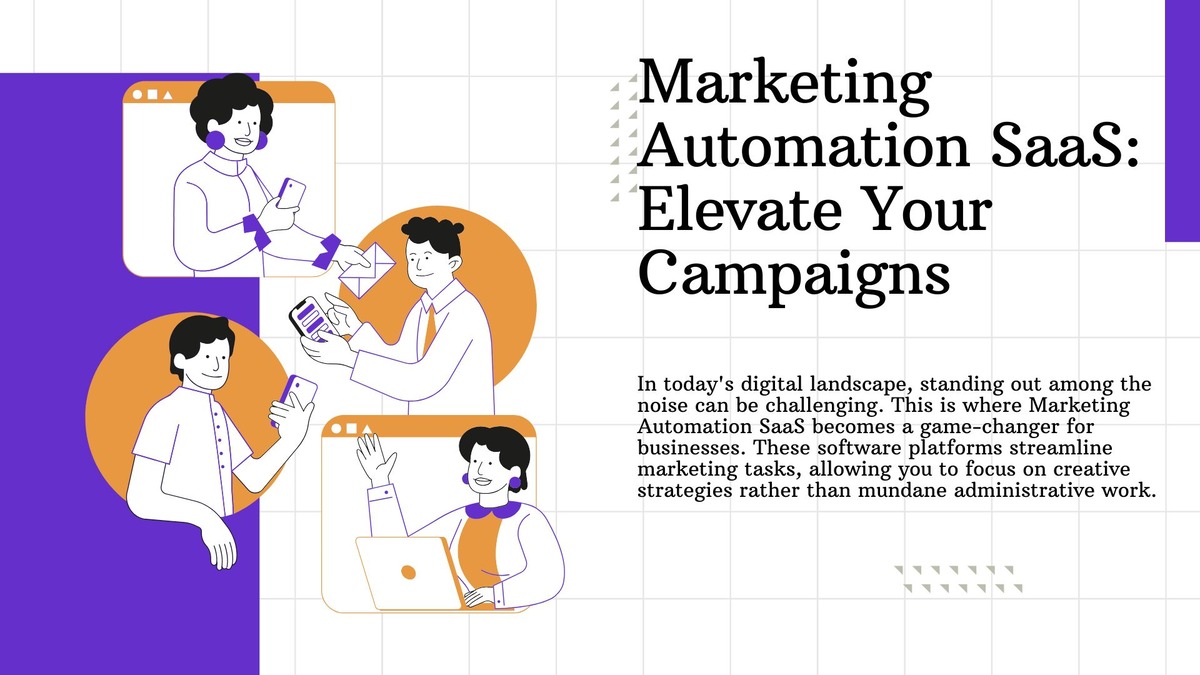
In today’s digital landscape, standing out among the noise can be challenging. This is where Marketing Automation SaaS becomes a game-changer for businesses. These software platforms streamline marketing tasks, allowing you to focus on creative strategies rather than mundane administrative work.
- Precision Campaigns with Email Marketing SaaS: One of the most popular types of Marketing Automation SaaS is email marketing tools. Platforms like Mailchimp and HubSpot enable automated email campaigns that target specific audience segments, ensuring your messages land in the right inboxes at the right times. They offer features such as A/B testing, analytics, and integration with CRM systems—all crucial for refining your approach.
- Boosting Social Media ROI with Integration:Social media integration is another key feature. Tools like Hootsuite and Buffer allow you to schedule posts across various platforms, monitor engagement, and analyze performance—all through a single dashboard. This holistic view makes it easier to adjust your strategies on the fly, improving your social media ROI.
- Optimizing Content with SEO Tools: Content management and SEO tools are also integral. Platforms like SEMrush and Moz provide automated solutions for keyword tracking, competitor analysis, and site audits. These insights enable you to optimize your content, driving organic traffic to your website.
- Streamlining Marketing with Automation SaaS: Lastly, comprehensive platforms like Marketo and Pardot offer full-suite functionalities that cover everything from lead nurturing and scoring to advanced analytics and reporting. By integrating these tools with your existing systems, you create a seamless workflow that boosts efficiency and effectiveness.
- Scaling with Marketing Automation SaaS: Marketing Automation SaaS is not just a tool but a transformative asset for businesses looking to scale. It automates repetitive tasks, provides invaluable data insights, and ultimately allows your team to focus on what they do best—creating compelling marketing campaigns that drive results.
Read More : Top 10 Popular SaaS Marketing Blogs in 2024

